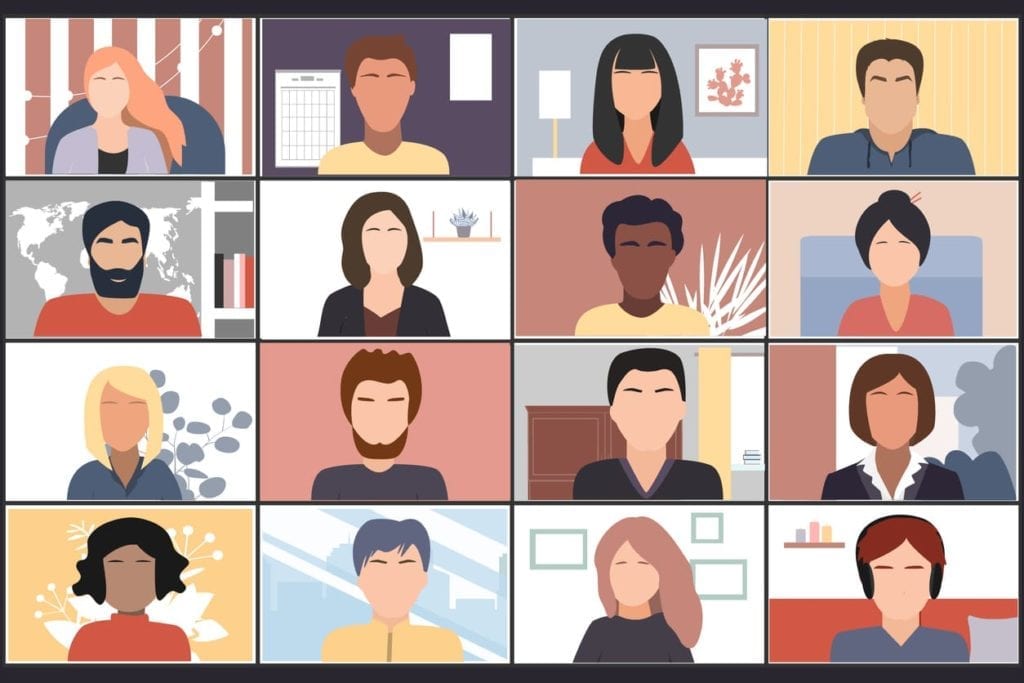It’s 2020 and Zoom-bombing is a Thing
When the history of the COVID-19 outbreak of 2020 is written, there will be at least a chapter about Zoom. The video conferencing app is now how hundreds of millions of people connect. Co-workers, teachers and students, family and friends, worshipers and clergy, and – well, just about everyone have turned to the solution when in-person contact isn’t possible.
Unfortunately, no company can quadruple its revenue year over year because of an unexpected turn of events and not experience some hiccups. In June 2019, Medium reported on a vulnerability that allowed malicious websites to take over Mac users’ cameras without permission, even if they deleted the Zoom app. “The flaw potentially exposes up to 75,000 companies around the world that use Zoom to conduct day-to-day business.” To make things worse, Zoom failed to completely resolve the flaw for some time.
Later, in January 2020, Check Point Research revealed a technique they used to identify and join active meetings due to the omission of meeting passwords or an enabled Waiting Room, which would have allowed meeting hosts to manually admit authorized participants. According to Vox, this security flaw resulting in the embarrassing and risky phenomenon dubbed “‘Zoombombing,’ where public Zoom meetings are joined by malicious actors who broadcast things like porn and other objectionable content to the rest of the room.”
Vox explains, “There are ways to mitigate this, such as passwords protecting meetings or limiting the screen sharing setting to the meeting host. But the fact that it is so easy for anyone to join and then disrupt a public Zoom meeting at all indicates that Zoom’s developers didn’t anticipate the ways those meetings could be disrupted in the first place – something that anyone who has used the Internet before really should have foreseen.”
Other security issues involve users saving recorded files to the open web, calls being routed through data centers in China, and shoddy encryption protocols, resulting in lawsuits for data sharing practices. While every technology company faces security issues, it appears Zoom has a long way to go before it can ensure users it has done enough to reduce risk and establish urgent mitigation processes.
Is This Thing On?
Beyond major security challenges, the Zoom platform recently had a global platform access issue that affected millions of users at the worst time possible. On August 25, 2020, Zoom suffered from a complete system breakdown, just as millions of students returned to Zoom-enabled distance learning. Zoom issued a statement, “We have received reports of users being unable to visit the Zoom website (zoom.us) and unable to start and join Zoom Meetings and Webinars. We are currently investigating and will provide updates as we have them.” The outage lasted more than three hours and there was little users could do in the meantime. CNN reported users in the United Kingdom also experienced the issue.
The outage wasn’t just annoying. It was devastating for school systems and universities that rely on Zoom as its primary form of connection with students. Schools weren’t the only ones affected. The New York Times said city and county governments, courthouses, and businesses were all scrambling to reschedule meetings, causing chaos and frustration, lost productivity, and delayed decision making.
Zoom will likely remain quite popular, but the company is suffering the growing pains of its rapid rise in usage. As Zoom navigates its highly-publicized mistakes and builds in better controls, users are caught in the middle. They can wait it out in hopes that Zoom will step up to the task or look for alternatives that might be less familiar, but more reliable.
The Road Less Traveled
Video Meetings by Phone.com is a Zoom alternative or backup that is attractive to businesses for a variety of reasons. Most notably:
- Security: Your meetings are locked and held between you and your invited participants only without the fear of Zoombombing. Your video and audio conferences are protected using enterprise-grade code, rigorously tested before going to market. No data is ever shared with Facebook or any other third-party outside the service. The Plus and Pro versions of our solution are HIPAA compliant.
- Stability: Unlike Zoom, our video meetings platform is growing at a sustainable rate. We can monitor and adjust our systems as needed to accommodate a slowly growing base of users. For users, this means a reliable solution that is available when you need it.
- Affordability: Our base plans start at less than $5 per month for each meeting host in addition to your Phone.com calling plan. This low price makes Video Meetings by Phone.com an excellent alternative to Zoom. Even if you want to keep Zoom as your primary platform, you can afford to have a Phone.com account as a backup for those times when Zoom’s servers are overwhelmed. There’s no contract, and you can cancel anytime.
As we all continue to adjust to this new world of working and living, we need tools we can depend on to keep us connected. Phone.com’s video solution will never be as popular as Zoom and we’re fine with that. We prefer to keep our focus on the small and growing businesses that count on us to empower their communications. In this case, there’s a big advantage for folks who don’t follow the crowd.





